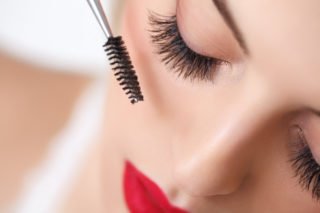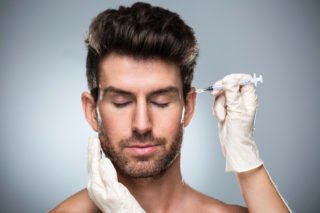Your eyes are one of your primary sensory gateways to the outside world. They are also one of the first things people notice about you. But while we know that the human eye can give us signals to many areas of our health, they also tend to be a part of our body we easily neglect.
Dr. Dirk J Booysen – a clinical optometrist and contact lens specialist, explains that our current lifestyle is one of the biggest dangers to eye health. “People spend more time indoors, mostly doing near-work on digital devices,” he says. “This leads to near-point strain and can be linked to the development of myopia and astigmatism, which have taken on epidemic proportions in the Far East. Dry eye is also on the increase, and we don’t have a handle on its causes yet, so treatment is difficult and chronic.”
In addition, our diets have changed to suit an increasingly busy lifestyle, and obesity is the order of the day. How this affects eye health is not entirely certain, but a great deal of research is looking at dry eye, and especially myopia, to find some answers.
Myopia
“What we know so far from literature is that genetics play a role. If your parents are myopic, your chances of becoming myopic are greater,” Booysen says.
“Dry eye and asthenopia are common associations with overuse of screens, and blue light may also be harmful to the retina,” adds Dr. Chrissie Cockinos, a Johannesburg ophthalmologist. “Studies suggest that the increase of myopia in children may be as a result of excessive reading/digital screens too close to the eyes for extended periods of time.”
Booysen says all children should have a baseline eye examination, where their risk factors can be evaluated and treatment strategies considered to prevent the myopic epidemic. Currently, there is no cure, but treatment can at least ensure that progression is slowed by up to 50%. This helps to prevent serious pathological complications of myopia that occur later in life.
Busting the myths of eye care 
Myth 1: You can “overuse” your eyes
If you’re afraid that your eyes might have an expiration date of some sort, rest assured; they don’t. Booysen believes you should use your eyes as much as possible, keeping in mind that you need to protect them from harmful radiations such as UV and IR.
Myth 2: If you need to clean your eyes, you should use milk
You should never do this, says Cockinos. Use clean running water only.
Myth 2: Spectacles “make your eyes worse”
Contrary to popular belief, you won’t do further damage to your eyes by wearing spectacles. However, if you need them and do not use them, you may suffer from eyestrain, headaches, and fatigue.
What role does eye color play?
When it comes to how your eyes react to sunlight, it’s quite similar to the principles of skin tone. The lighter the eye, the less pigment in the iris. This means that more light can enter the eye and potentially damage the crystalline lens and retina. As a result, notes Cockinos, people with light-colored eyes – grey, light green, or blue – are more sensitive to bright light and glare than those with brown or dark eyes.
“The pigment (melanin) in the iris works as a natural filter, which protects the internal eye,” says Booysen. “However, the anterior or front of the eye is not protected from the harmful rays of the sun. It needs protection in the form of a pair of good-quality sunglasses that eliminate UV light.”
 Your eyes and makeup
Your eyes and makeup
One of the oldest and most iron-clad rules of beauty is always to cleanse your face of makeup before going to bed – no matter what. And while it’s mostly attributed to making sure the skin around your eyes has been taken care of, a recent case study, published in the Journal of the American Academy of Ophthalmology, indicates that this rule can help to protect your eyes as well.
According to Newsweek, in 2018 a 50-year-old Australian woman had to undergo surgery because she failed to comply with the rule. When Theresa Lynch complained to her doctor that she experienced constant irritation in her eye, her doctor found several small black spots, known as sub-conjunctival concretions. As it turns out, for about 25 years she had worn mascara every day without removing it at night. The black dots were mascara particles that had calcified under her eyelids.
What’s the best way to protect your eyes when wearing makeup?
- Use a gentle, water-based, hypoallergenic cleanser that has been approved by ophthalmologists when removing your eye makeup.
- Remember to replace your mascara and liquid eyeliner once every two to four months to avoid bacteria collecting in the bottle.
- Avoid sharing eye makeup, as this can also increase your chances of an eye infection.
Sleepy hollows
Not the Tim Burton horror, but rather a description of what happens to our face when we don’t get enough sleep – the appearance of those pesky dark circles under the eyes. To make things worse, these come paired with puffy skin and eye bags, resulting in an exhausting look overall. These symptoms are usually due to an out-of-sync circadian rhythm, lifestyle, nutrition, or simply genetics.
For a fresher, more awake look in the skin around your eyes, the following everyday tips can help to banish these symptoms:
1. Focus on the ingredients in your eye treatment
You probably can’t start using a good eye cream or serum too early. Look for ingredients such as caffeine, antioxidants, hyaluronic acid, collagen, elastin, and vitamin A, which will help to increase circulation and decrease fluid retention. For extra potency, store your cream or serum in the fridge.
Dr. Vale recommends dabbing it on lightly in the periorbital area. Using your ring finger is best, as this allows for the least amount of tugging on the delicate skin.
2. Prep your skin by de-puffing
A trick we learned from supermodel Kate Moss: when you wake up, wash your face with icy water to get rid of the morning puffiness and seal the pores on your cheeks. This will get you started with brighter, awake eyes.
3. Correct and conceal
Once your skin is properly prepped, you can focus on concealing any remaining dark areas with makeup. Bobbi Brown, professional makeup artist and founder of Bobbi Brown Cosmetics, provides the following guidelines:
- Start by patting a small amount of eye cream under the eyes.
- Using a concealer brush, apply a cream corrector under the eyes, choosing your hue based on the nature of the discoloration. If it’s blue or purple, opt for a bisque shade; if it’s more green or brown, you should go for the peachy hue.
- After you’ve blended the corrector, apply a concealer that is one shade lighter than your normal skin tone. This will lighten and brighten the area.
- Lightly set it with some powder, which will ensure the makeup look lasts.
4. Under-eye facials
In addition to giving your skin a deep cleanse, shrinking your pores, and adding hydration, the right facial can help to take care of your under-eye issues. Ask for one that gives you a gentle deep-tissue massage and stimulates the muscles under the skin.
Take the facial home with a roller or a cold under-eye mask that can energize the blood flow and contour the eye area again.
5. Get enough sleep
The best way not to look tired is – you guessed it – to give your body the rest it needs. “People who sleep less often have puffy, red, bloodshot eyes, says Cockinos. “Your eyes lubricate properly, and old cells and proteins are cleared away by sleeping enough.”
Bye-bye birdie – smoothing out crow’s feet
Wrinkles around your eyes are a beauty issue as old as time itself. Because the skin around the eyes is significantly thinner than that on the rest of our body, skin damage due to exposure to the sun, smoking, or free radicals shows up in the form of deep, prominent crevices.
We develop crow’s feet due to the loss of two proteins that are needed for the firm, plump skin: elastin and collagen. You can slow down and prevent premature aging in this area of your skin by:
- Protecting your skin against sun damage – the primary reason for wrinkles. Wear sunscreen daily, year-round. If you’re in the sun, protect your eye area with a wide-brim hat and reapply sunscreen every two hours;
- Wearing polarised sunglasses that will stop you from closing your eyes, and protect your eyes at the same time;
- Stop smoking or drinking regularly;
- Eating a nutritious diet; and
- Staying hydrated throughout the day.
When it comes to treatment, your options include the following:
Botulinum toxin
This is still considered the most effective and long-lasting treatment for crow’s feet because it prevents the muscles from contracting, and so reduces the appearance of deep lines. Dr. Vale recommends treatment sessions repeated every three to four months for optimum results.
Surgical blepharoplasty
According to Dr. Vale, this treatment provides the best results when the aesthetic issue is with excess upper or lower eyelid skin, as well as pockets of prolapsing eyelid fat.
Filler treatment in your tear troughs
This cosmetic treatment works to fill in the trough hollow under both the inside and outside of the eyes. It makes use of a dermal filler that is injected into the area under the eyes, which is usually hyaluronic acid-based. However, it’s important to keep in mind that this treatment needs to work around the central retinal artery. If this artery is accidentally pierced during the procedure, it could result in loss of vision or stroke.
For this reason, it’s vital to work only with an accredited, board-certified surgeon who has the proper training for this procedure. This treatment usually lasts for between six months and a year.
Laser resurfacing and chemical peels
These treatments can help restore a youthful look to the skin around your eyes by removing the upper, dead layer of skin. Laser resurfacing also works to improve the production of collagen, thereby encouraging skin renewal.
Good eye-health habits 
Booysen advises that, for good eye health, you need to implement healthy habits. “Have regular eye examinations to ensure that your eyes are healthy, and use spectacles even if your prescription is small.”
In addition, you should spend enough time outdoors, and enjoy a healthy diet rich in vegetables and fruit, and low in refined sugars and carbohydrates. Click here to find out which foods can help improve your eye health over time.
Use sunglasses (especially when you’re driving), and limit the time you spend on digital devices and doing near-work.
Practice good eye hygiene, such as washing your closed eyes in the shower daily with a good eyelid shampoo. In addition, you should keep your spectacles and contact lenses up-to-date and clean.
When you reach middle or old age, you will need an annual checkup with an ophthalmologist. If you are over 50 and at risk of macular degeneration, speak to your healthcare specialist about eye vitamin supplements.
Eye care and surgery in the future
Current research will hopefully help us to eliminate or reduce the burden of common eye disease and conditions such as dry eye, macular degeneration, myopia, keratoconus, glaucoma, and diabetic retinopathy. These conditions are among the leading causes of severe visual disability and blindness.
“Retinal transplants in blind people have been of limited success, but researchers are still working to improve the outcomes,” says Cockinos. “Robot-assisted retinal procedures by expert retinal surgeons are likely to become used in the near future. Gene therapy for inherited diseases of the eye is a treatment we can look forward to. Blind people who have the means to afford a special device with a camera and external processor with a retinal chip may get a minimum vision from this procedure in Germany.”
Resources:
Gander, K. 2018. Newsweek. Woman Who Slept In Her Mascara Every Night For 25 Years Has To Have Emergency Surgery. https://www.newsweek.com/woman-slept-wearing-mascara-surgery-remove-calcified-lumps-956185
Dana, E. 2018. Subconjunctival Mascara Deposition. Journal of the American Academy of Ophthalmology. Volume 125 (5): 641 DOI: https://doi.org/10.1016/j.ophtha.2017.12.035


 Your eyes and makeup
Your eyes and makeup

![women [longevity live]](https://longevitylive.com/wp-content/uploads/2020/01/photo-of-women-walking-down-the-street-1116984-100x100.jpg)










